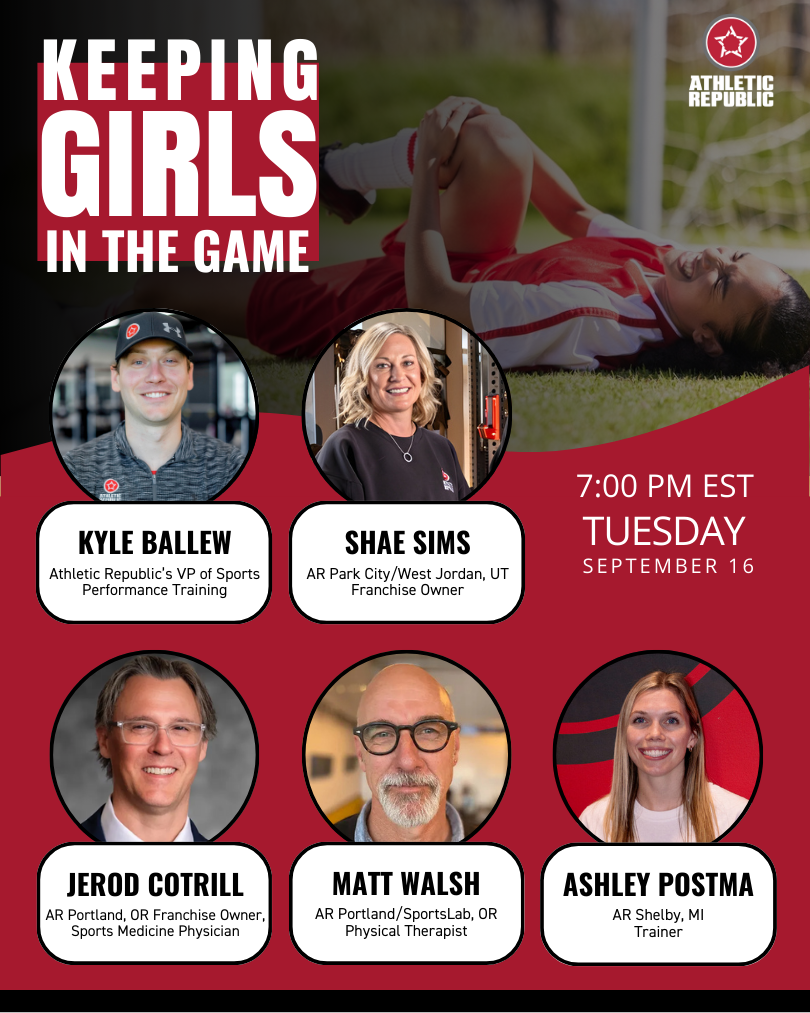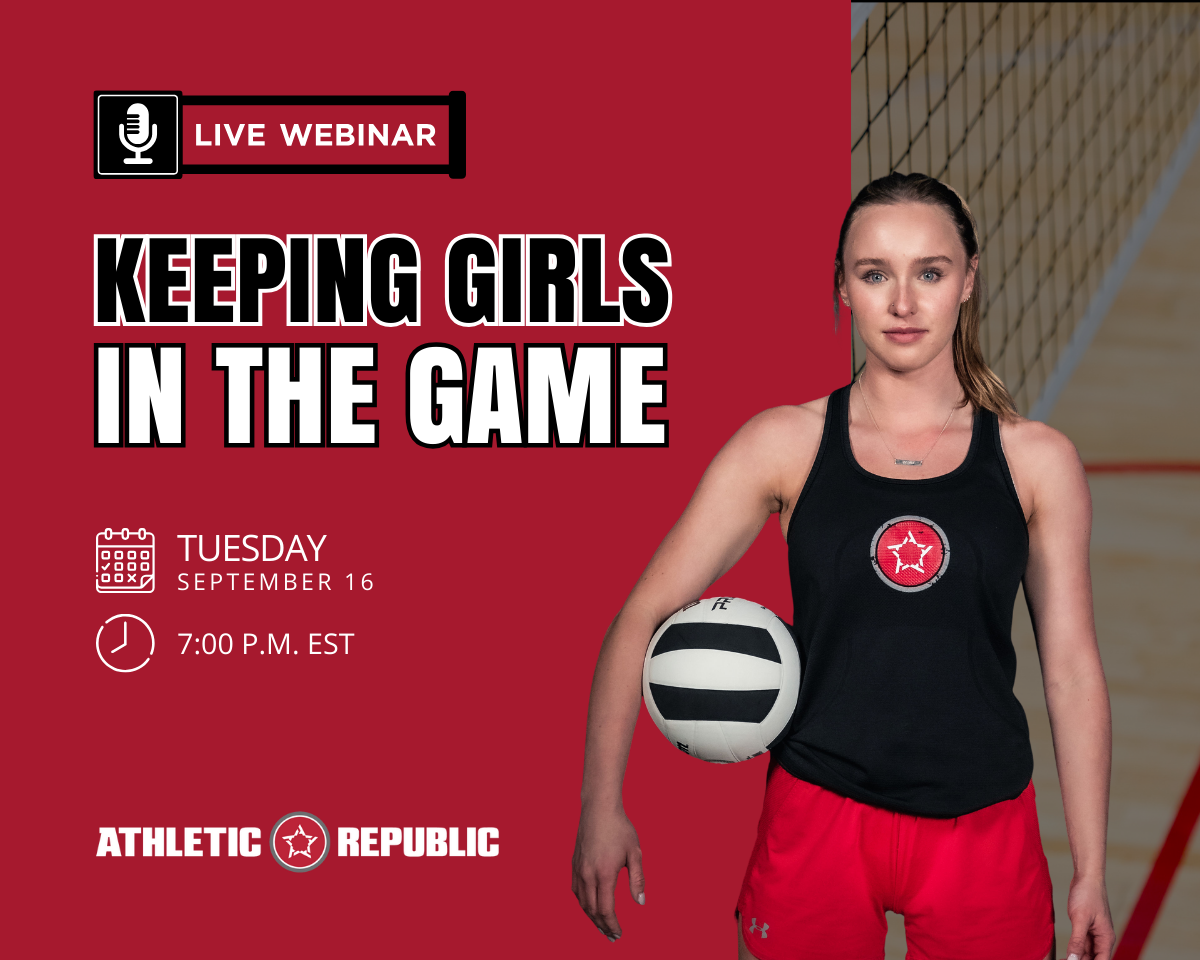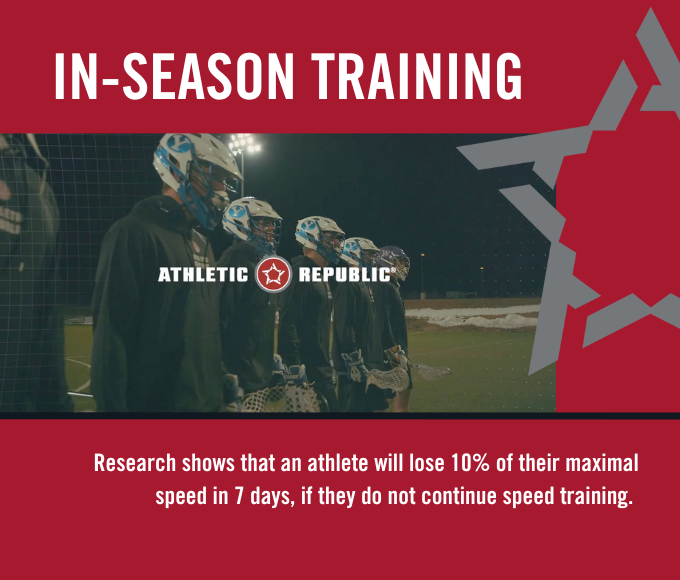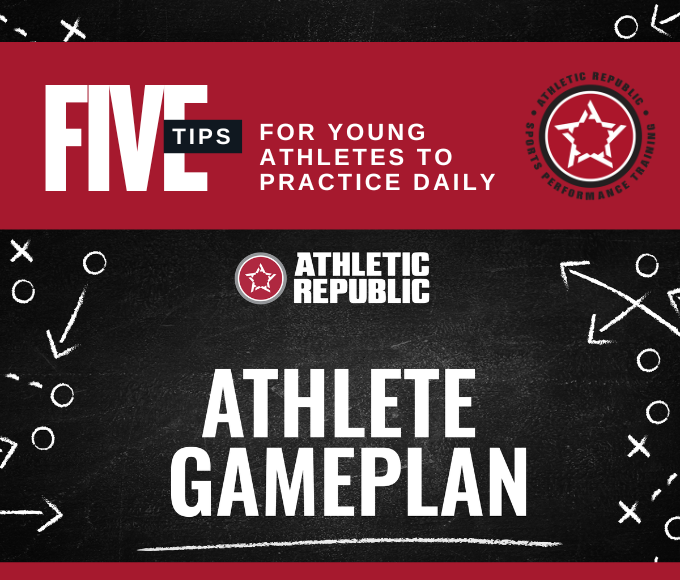1 in 10 Female Athletes Will Endure an ACL Injury in High School Sports
Female athletes experience dramatically higher rates of specific musculoskeletal injuries and medical conditions compared to male athletes.
On September 16, 2025 at 7pm EST, a panel of experts will discuss keeping girls in the game by reducing the risk of the non-contact ACL injury.

An Almost Epidemic Rise in ACL Injuries in Female Athletes
In particular, ACL injuries occur at a three to six times greater rate in females compared to male athletes playing the same high-risk sports. The combination of increased risk of ACL injury and a 10-fold increase in sports participation since the enactment of Title IX in 1972 has led to an almost epidemic rise in ACL injuries in female athletes (North American Journal of Sports Physical Therapy).
Research has identified several reasons for this discrepancy. First, girls and women tend to have an imbalance in the strength ratio between their quadriceps and hamstring muscle groups. A female athlete is more likely to use the quadriceps to slow down from a sprint, thus causing instability in the knee. A male athlete is more likely to decelerate using his hamstrings to absorb the change in speed.
This slight difference provides an inherent protection to the ligaments of the knee for the male athlete. Video analysis of athletes has identified four common traits during a female ACL sprain or tear; 1) As the at-risk female athlete lands, her knee buckles inward, 2) the injured knee is relatively straight, 3) most, if not all of her weight is on a single lower extremity, and 4) her trunk tends to be leaning laterally.
Additionally, some doctors think females are more likely to have an ACL injury because of the differences in the number of circulating hormones such as estrogen and relaxin. Both of these hormones give ligaments strength and flexibility and the fluctuations of the hormone may influence the function of the nerves and muscles.
Athletic Republic’s Part in Injury Prevention
At Athletic Republic, we can reduce the risk of non-contact ACL and other injuries by performing training drills that require balance, power, and agility. Adding plyometric exercises, such as jumping, and balance drills help improve neuromuscular conditioning and muscular reactions which ultimately shows a decrease in the risk of ACL injury.
Research by the American Pediatric Association shows that many of these injuries are preventable with the proper neuromuscular training and many sports physicians now routinely recommend an ACL-specific conditioning program, especially for their female players. Unfortunately coaches don’t always take the time to practice body fortification and injury prevention routines.
Athletic Republic’s training programs, are created to improve core stability and balance, enhance reaction time, optimize movement mechanics, and reduce strength imbalances to reduce the risk of lower extremity injury while improving athletic performance.


